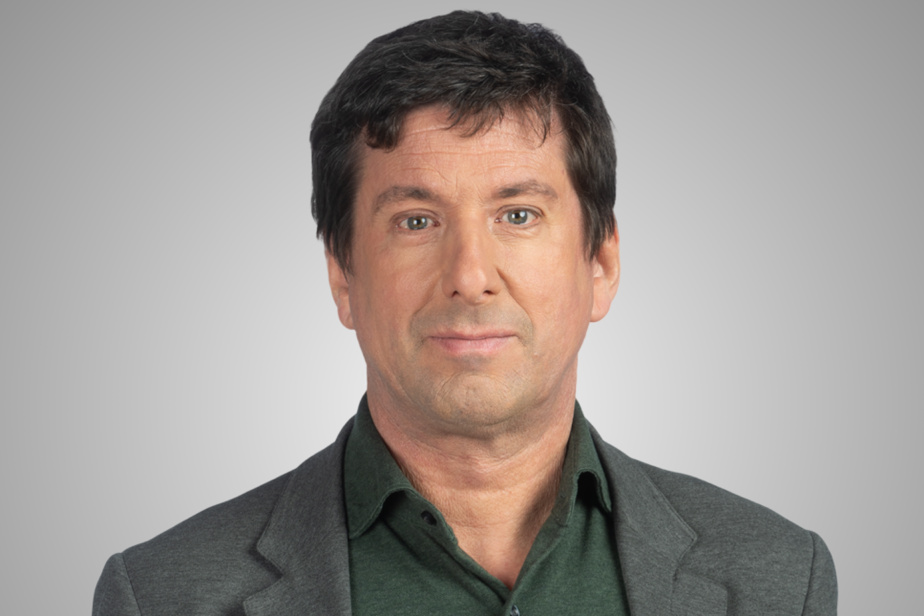I wasn’t going backwards, but let’s just say I wasn’t walking very quickly towards Polytechnic ProjectWednesday.
I had booked December 6, without really thinking that it was the very date of the killing. Who knows how the brain obscures our consciousness to make us take a path.
The massacre of December 6, 1989 is territory that I have not wanted to revisit much, since the day I stood in line with thousands of people to enter Poly, where the coffins of 14 young women about my age lay. age.
I haven’t seen the movie Polytechnic, by Denis Villeneuve, despite the good things that have been said about it. I told myself that this time I had to go to TNM.
I met an engineer friend who entered Poly the following year, when everything was still so lively. Coming out, still in shock from what is as much a commemoration as a documentary theater piece, she wrote to me that she realized “to what extent I have always carried within me this stress and this hatred of women or what I represented “.
It was not only the first American-style mass shooting to occur here. It was mass femicide. This is a level of hatred that is impossible to manage, to digest, even 34 years later.
I am not writing a theater review here. It seemed like it was more the scene that was watching the room that evening.
On this day of the 34the anniversary, just knowing that the parents and friends of the 14 women killed were present in the silence and anonymous darkness of this room, giving this evening something solemn.
Several uniformed police officers were in the room. In the middle, former police chief Jacques Duchesneau. He watched himself on stage, personified by an actor recounting that he was one of the first police officers to enter the scene of the massacre. Both moved by the story and surprised to realize that he rolls his “r’s” so much. He returned to the scene with the actor-authors, Jean-Marc Dalphond and Marie-Joanne Boucher. Told them about his entry into the building, the bodies, the blood everywhere. His police colleague Pierre Leclair, who had just discovered his own daughter, Maryse, murdered. And the chilling silence.
“It’s a scar that never heals,” he told me afterwards.
Twenty-eight years later, his son, an RCMP police officer, was sent one January evening to the great mosque of Quebec, where six men had just been killed.
Heidi Rathjen, who studied at Poly, became the face of the Canadian gun control movement. She graduated the following spring and was already hired as a civil engineer. She saw herself leading major projects.
It was by organizing a petition for gun control that his life took this turn. In May 1990, the Minister of Justice, Kim Campbell, came to Poly to announce a new law. She was satisfied, she had done her job as a citizen. She would return to civil engineering.
But the bill, already weak, died on the order paper even before the first anniversary of the killing. She told herself that she could no longer be a part-time activist in the evening and calculate charges during the day. Jocelyne Légaré, of Memoria, who had organized the funeral, lent him premises and financed the launch of her gun control organization.
“I was thinking of doing this for six months…”
After six years, the Liberal government established the Arms Registry and adopted certain control measures. Heidi Rathjen went to work for the Quebec Coalition for Tobacco Control, where she still works.
“The tobacco lobby is smarter and richer, they wrote the book on lobbying techniques,” she said. But smokers don’t support tobacco, they don’t want their children to smoke. The gun lobby is ideological and emotional. It’s as if a question of identity is at stake with guns. We receive a lot more hatred and threats from them. »
After the 1995 victory came setback: the abolition of the register by the conservatives in 2015. She dove back into the issue, as Poly coordinator remembers, with Nathalie Provost, who received bullets from the killer, the December 6, 1989.
Despite many promises, the Liberals have not delivered on the abolition of assault weapons. The bills have been systematically watered down.
At least Bill C-21, if ultimately passed, will result in a freeze on the transfer of handguns and a ban on gun ownership for those accused of domestic violence.
All this action is purely voluntary. Exhausting. Often discouraging. Not to mention the constant threats from gun enthusiasts. “It’s still running through my head a little…”
—What gives you the strength to continue?
“The families of my fellow victims of the time. Or to see the father of Angie Sweeney, whose daughter was murdered by her partner in Sault Ste. Marie, drive 10 hours to come to the commemorations with us and fight alongside us. It gives us energy. We see that our work counts and that families count on us. We must be faithful to our promises of 1989.”
She went to see the play twice. This “Polytechnic project”, which emerged 34 years later, also encouraged her. Not everything was forgotten, not everything was done in vain.
We can’t know what it’s like to lose a child, a sister, a friend like that, said Annabel Soutar, the director of the Spokesperson theater, before the performance.
But we can be “in solidarity with your loss”.
Living art is also irreplaceable for this. For this kind of momentary secular communion of hearts and brains.
